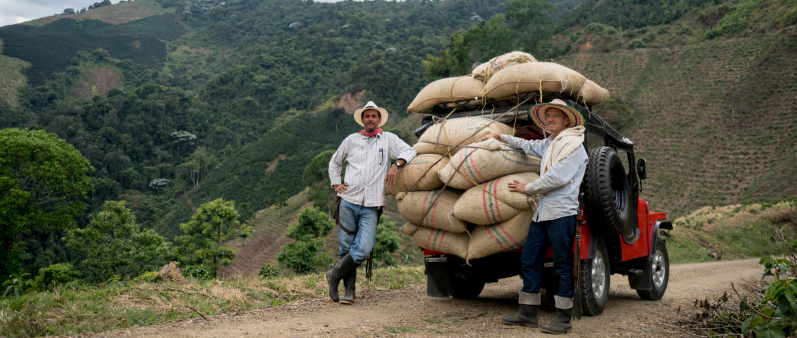
Coffee Growing Regions of Latin America
Coffee may be a staple in your morning routine, but it’s also a staple in the economy of many different Latin American countries. Colombia and Brazil are the largest producers of the region, but smaller countries like Nicaragua, Guatemala, and Ecuador depend on the export to stabilize their respective economies.
I love coffee. Cortados, pour-overs, americanos, you name it. I also love to travel, especially in Latin America. In fact, I’ve spent the better part of the past few years exploring different coffee growing regions. Why? Well for starters, the weather is unbeatable. The optimal temperature range for growing coffee is between 63°F to 73°F. Second, small towns that rely on coffee are charming, full of history and friendly people. Third, the best coffee grows at elevation, which means a beautiful landscape and plenty of opportunities for hiking, paragliding, mountain biking, and other extreme activities.
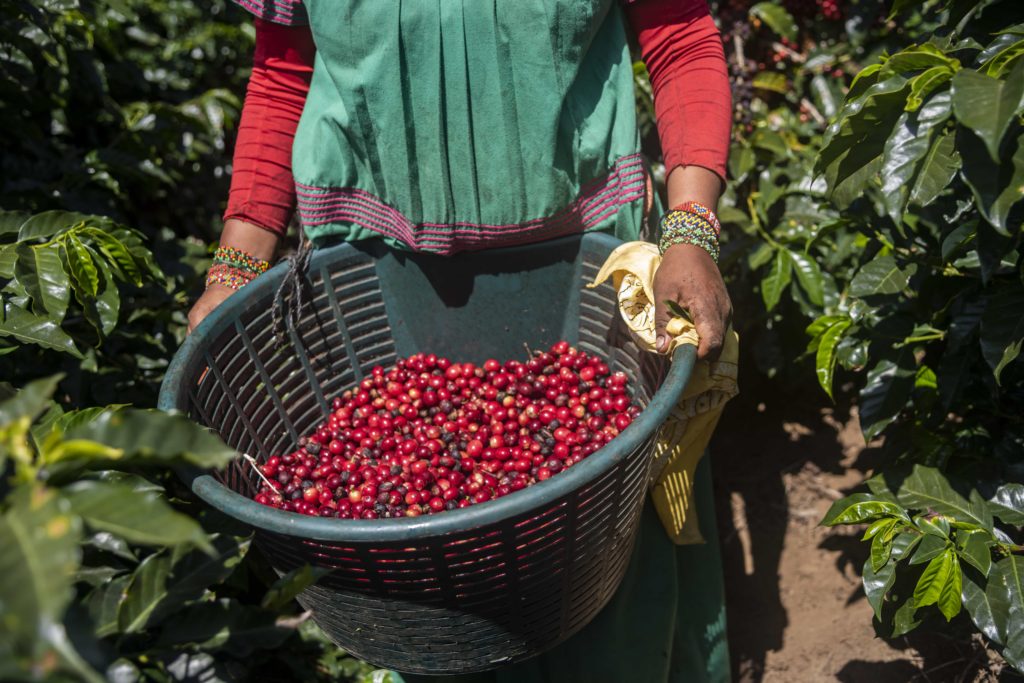
You’ll never be bored when visiting a coffee-growing region. Featured below are some places that you should add to your next trip itinerary.
Mexican and Central American Coffee Production
Mexico and Central America produce a wide range of different coffee beans. Flavors are sweet and tart, ranging from citrus to chocolate. The coffees are often described as having a clean flavor with a fruit-like acidity.
Mexico
Chiapas
- San Cristobal de las Casas is a great base for exploring Chiapas, one of Mexico’s most culturally rich states. There’s museums, churches, markets, Mayan ruins, and one of the largest canyons in the world — Sumidero Canyon.
Veracruz
- Coatepec is known as the coffee capital of Mexico. The interactive coffee museum, El Cafetal, is a great place to learn about the coffee process.
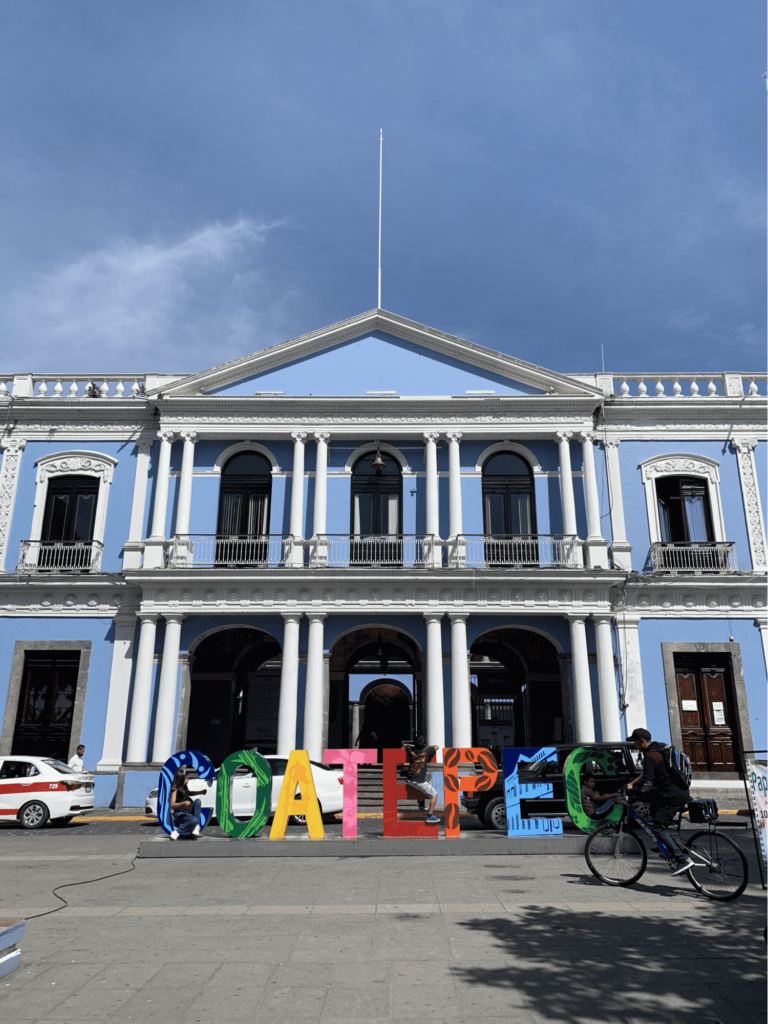
- Xico, a town nearby, is another special place to visit. It’s one of the oldest cities in Mexico and has spectacular views of the surrounding mountains. If you really want to see something special though, be sure to visit the Texolo waterfall.
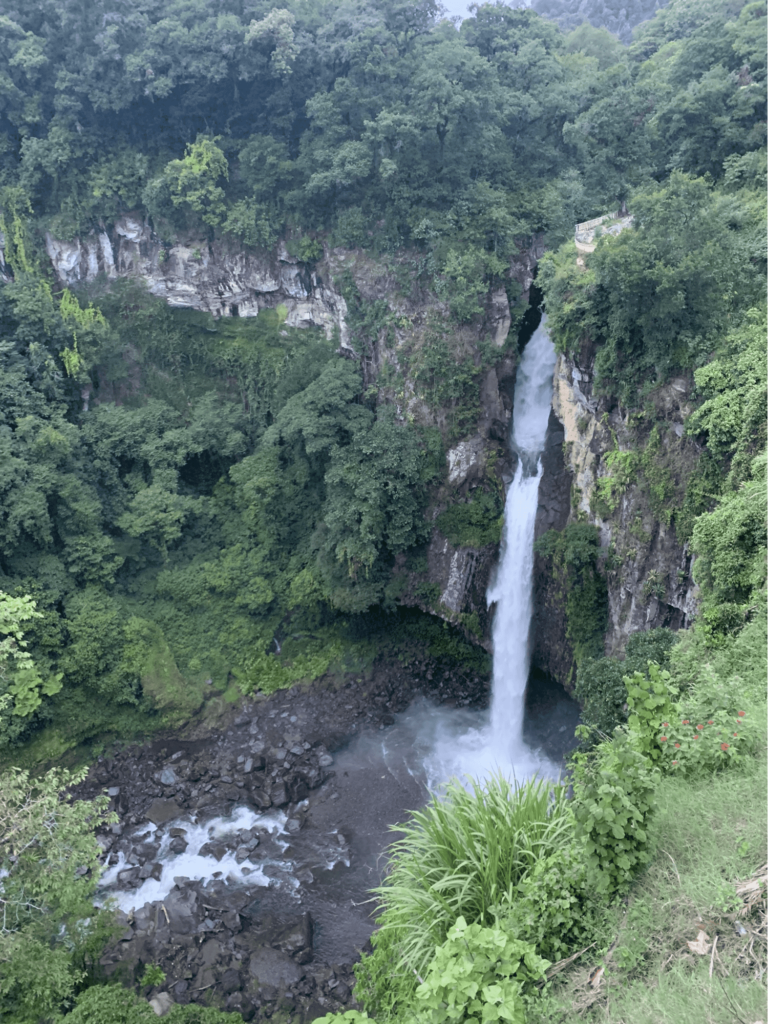
The Texolo waterfall is 80 feet high, and one of the best things to see near Xico, Veracruz.
Guatemala
Antigua
- Antigua is the tourist capital of Guatemala. It’s surrounded by volcanoes, which lend jaw-dropping views and some of the most flavorful coffee in the world. There are plenty of coffee tours to nearby plantations and coffee shops in town where you can sample some of the world’s finest coffee.
Lake Atitlan
- If you’re in Guatemala, you can’t miss Lake Atitlan. Not only is it surrounded by coffee, but it is also a great place to experience Mayan culture. There are many different coffee cooperatives that support the rights of local coffee farmers.
Huehuetenango
- Huehuetenango is the main coffee hub in Guatemala. Nearby is Todos Santos Cuchumatan, where men still wear traditional Mayan clothing. If you visit near All Saints Day, you’ll be able to witness one of Central America’s most eclectic festivals.
Nicaragua
Northern Nicaragua
- Visiting Jinotega feels like stepping back into time. Visit Don Colocho’s bakery to try rosquillas, a unique pastry meant to be dipped in coffee.
- Estelí is another village where coffee farmers come to sell their beans. In the 1960’s it became home to Cuban tobacco farmers fleeing the revolution. Be sure to visit one of the many cigar factories in town for a tour.
Costa Rica
Monteverde
- Monteverde is situated in a cloud forest, a very rare ecosystem. In fact, it’s one of the most biodiverse areas in the entire world.
Panama – Home to the Most Expensive Coffee in the World
Boquete
- In Boquete, you’ll find the most sought after coffee bean in the world — the Geisha. For this reason, you can’t do a coffee tour with scented lotion, perfume, or even sunblock as if may affect the taste of the coffee.
South American Coffee Growing Regions
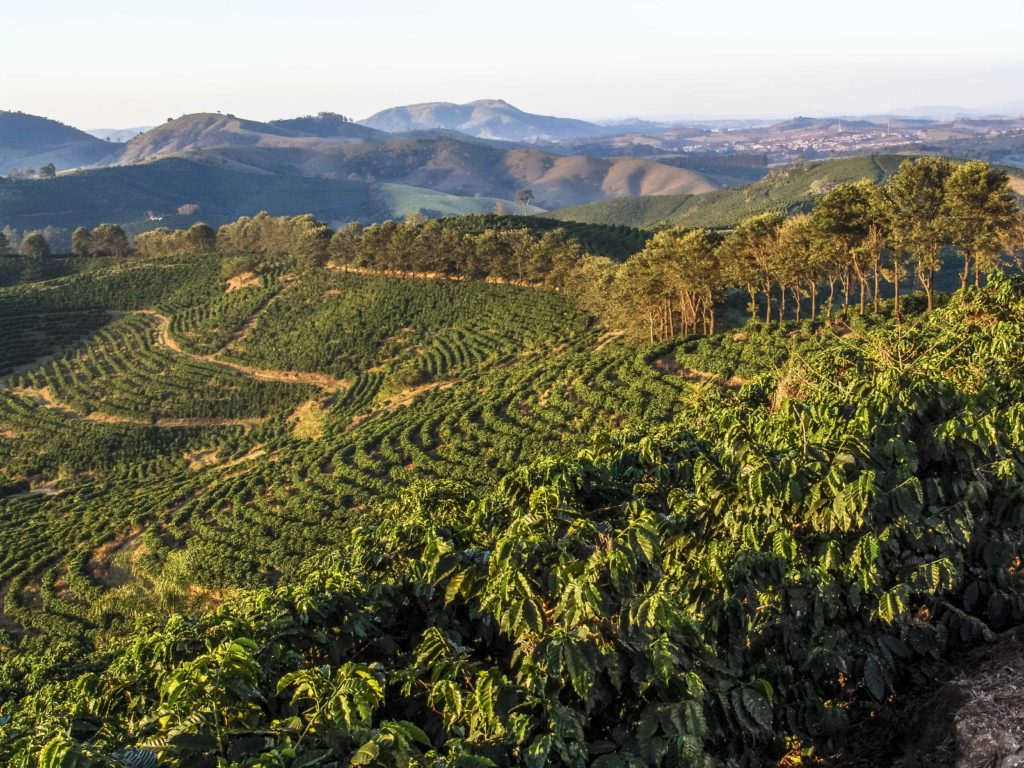
South American coffees typically have flavors of nuts, chocolate, and caramel. The different varieties typically have strong flavors with a heavy body, which makes them great for espresso. Brazil produces the most coffee, but Colombia has the reputation of producing the highest quality. Peru, on the other hand, produces a lot of organic coffee.
Colombia
Antioquia
- Jericó and Jardin are great places to experience Antioquia, one of the most culturally rich states of Colombia. The two small towns are extremely colorful with two-story homes and flower-filled patios.
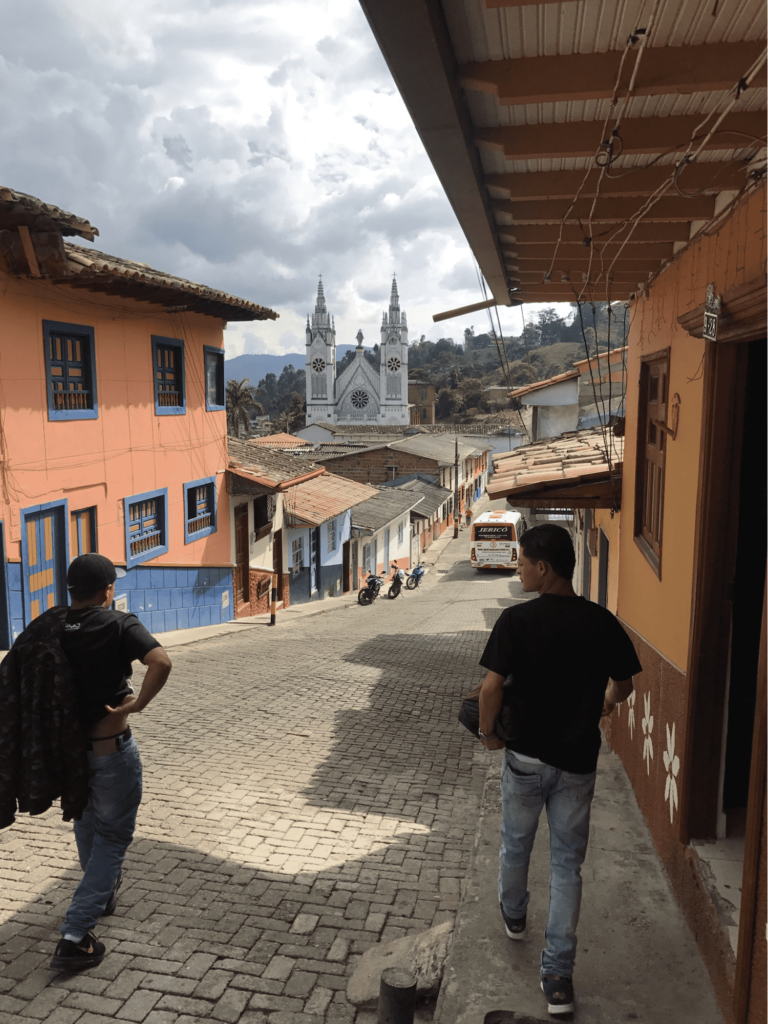
Homes in Jerico, Antioquia are certainly picturesque. You’ll see color combinations that you never thought would work well on a home. The place has a certain charm that makes you never want to leave.
Eje Cafetero
- Buena Vista lives up to its name “Great View”. Another town nearby, Pijao, is the launching point for The Wake Up Coffee Tour. This tour is celebrated as one of the most in-depth coffee tours in Colombia.
- Salento is the tourist capital of Colombia’s coffee growing region. Nearby is Cocora Valley, which has the tallest palm trees in the world.
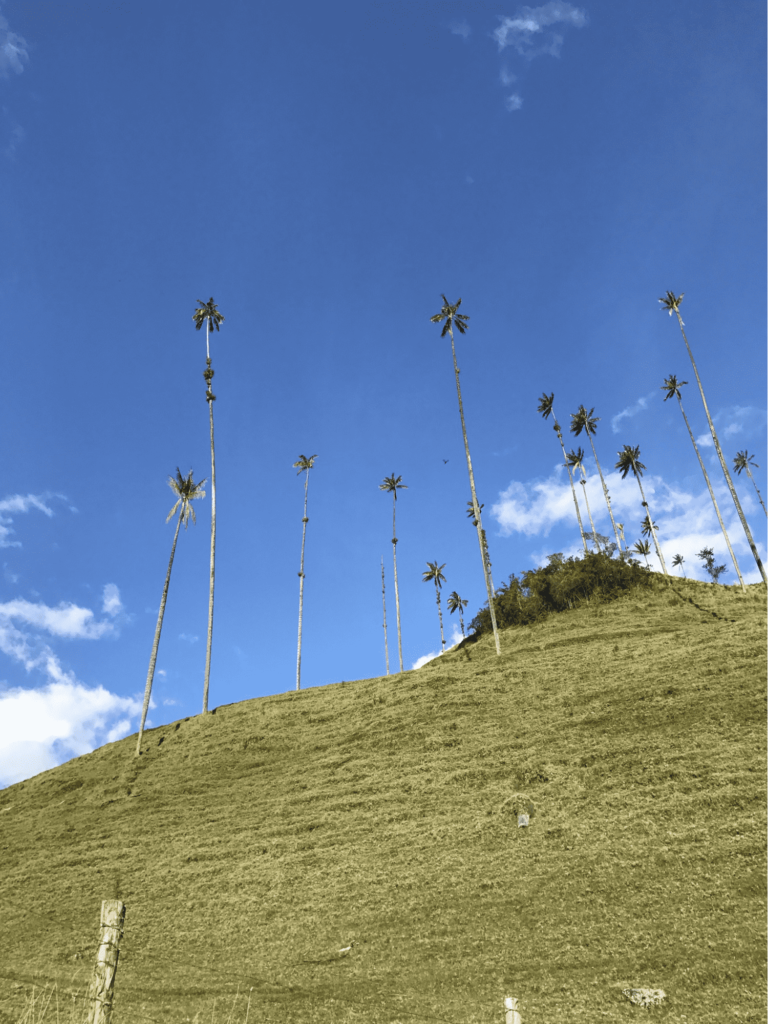
Santander
- Barichara and San Gil are two great places to visit in this Colombian coffee-growing region. San Gil is where you can get your adrenaline pumping with caving, rafting, and mountain biking tours. Barichara is more relaxed, beautiful, and full of quaint cafés.
Ecuador
Mindo
- Mindo is a small town nearby to Quito. Surrounding the town are coffee farms, waterfalls, and hiking trails. Like Monteverde, it is a cloud forest with incredible biodiversity.
Peru
The Sacred Valley
- Cusco is where your journey to Machu Picchu will begin, but there are plenty of other reasons why you should visit. It’s full of markets, museums, plazas, and ruins.
Leoncio Prado
- Tingo Maria is known as “The Door to Amazonia”. It’s located between rivers, mountains, and rain forests, making it the ideal place for growing coffee.
Brazil
Minas Gerais
- Tiradentes has some of the most impressive colonial architecture in all of Brazil. The surrounding landscape is stunning and full of different coffee plantations. After doing a coffee tour, be sure to try some locally made cachaça, Brazil’s most well-known liquor.
Here are some keywords and phrases to know before you start ordering coffee in Spanish.
Spanish Coffee Vocabulary and Phrases

- Un café – a coffee
- El café – Café or coffee shop
- Un americano – an americano (more common than American-style brewed coffee at cafés)
- ¿Con azúcar? – With sugar?
- Sin azúcar, por favor. – Without sugar, please.
- Tomar un café – To drink a coffee.
- ¿Para aquí o para llevar? – For here or to go?
Learn Spanish on the Go
Discover how speaking a new language changes everything. Experience life-changing adventures. Create unforgettable memories. Easy listening, rewarding results in just 30 minutes a day!
Give us 30 minutes a day and we’ll have you speaking your new language in no time. That’s all it takes for you to confidently inquire about prices, order dinner, ask for (or offer) directions – in your new language – with a near-native accent.
Just listen, respond and learn to converse in … Spanish while driving … Japanese while jogging … French while cooking. It’s really that portable and flexible. So what are you waiting for? When it comes to building actual conversational skills, nothing compares to the proven Pimsleur Method.
No Comments for "Coffee Terroir – Where is Coffee Grown in Latin America?"